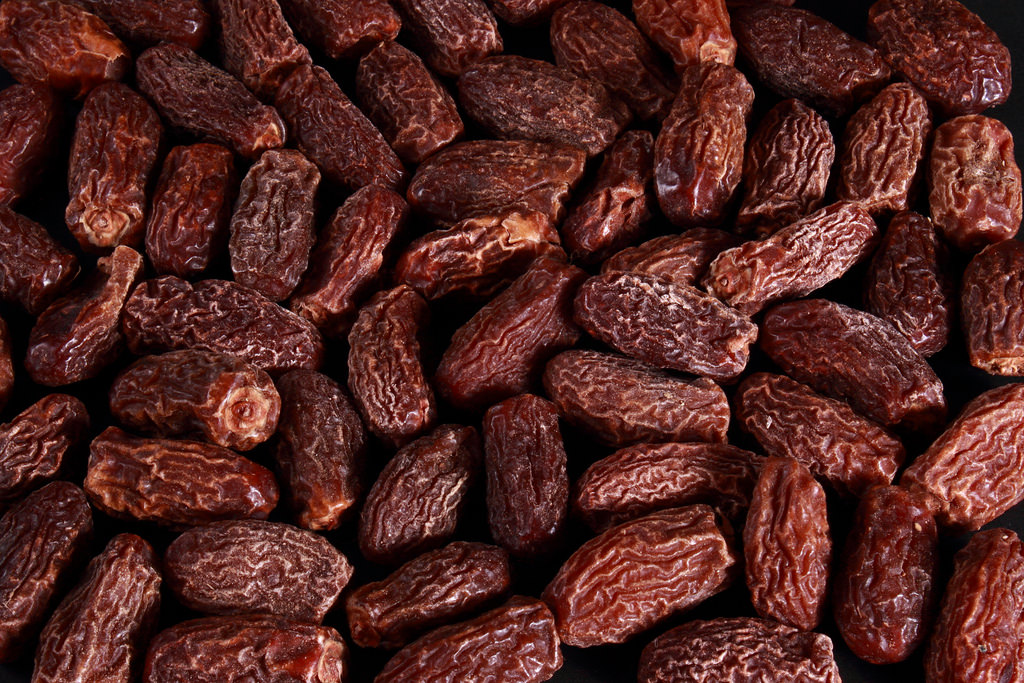Dates, also knows as date palms, are a flowering plant species in the palm family, Arecaceae, cultivated for its edible sweet fruit. The species is widely cultivated and is naturalized in many tropical and subtropical regions worldwide. Take a look below for 26 more fun and interesting facts about dates.
1. Date trees typically reach about 21 to 23 meters, or 69 to 75 feet, in height, growing singly or forming a clump with several stems from a single root system.
2. The leaves of date trees are 4 to 6 meters, or 13 to 20 feet, long, with spines on the petiole, and pinnate, with about 150 leaflets.
3. The species name for dates “dactylifera” comes from the Greek words “daktylos”, which means “date” and “fero” meaning “I bear.”
4. Fossil records show that the date palm has existed for at least 50 million years.

5. Dates have been a staple food in the Middle East and the Indus Valley for thousands of years. There is archaeological evidence of date cultivation in eastern Arabia between 5530 and 5320 calBC.
6. Dates are believed to have originated around what is now Iraq, and have been cultivated since ancient times from Mesopotamia to prehistoric Egypt. The Ancient Egyptians used the fruits to make wine and ate them at harvest.
7. There is archaeological evidence of date cultivation in Mehrgarh around 7000 BCE, a Neolithic civilization in what is now western Pakistan.
8. Evidence of date cultivation is continually found throughout later civilizations in the Indus Valley, including the Harappan period 2600 to 1900 BCE.
9. The date was a popular garden plant in Roman peristyle gardens, thought it would not bear fruit in the more temperate climate of Italy.
10. Date plants are recognizable in frescoes from Pompeii and elsewhere in Italy, including a garden scene from the House of the Wedding of Alexander.

11. Date trees held a lot of significance in early Judaism and in early Christianity, in part because the tree was heavily cultivated as a food source in ancient Israel. In the Bible, palm trees are references as symbols of prosperity and triumph.
12. One cup of dates has about 400 calories, 27% of the recommended daily requirement of potassium and 48% of daily fiber needs.
13. Dates also provide calcium, zinc, iron, copper, magnesium and other minerals that may help lower blood pressure, stroke risk and labor complications in pregnant women.
14. Dates are rich in the antioxidants known as polyphenols, which fight disease causing free radicals.
15. There are very few people that are allergic to dates.
16. Due to their low water and high sugar content, dates can stay fresh for a long time.

17. Dates made nomadic life and trade possible in the very dry and hot regions of the Middle East and North Africa.
18. Because the tree and its fruit have so many uses, from food to building materials, the date palm is known as the tree of life in the Middle East, and it’s the national symbol of Saudi Arabia and Israel.
19. Date palm seeds can go dormant for decades until the right light and water conditions come.
20. Some scholars believe that a date, not an apple, was the real fruit mentioned in the Bible’s Garden of Eden.
21. Dates and laban, or buttermilk, are traditionally used by Muslims to break the Ramadan fast each evening.
22. Ancient Egyptian hieroglyphics mark years with images of full date palms, as the trees grow 12 new fronds per year.

23. The majority of U.S. dates are grown in California’s Coachella Valley. High temperatures and irrigation from the Colorado River make growing conditions ideal.
24. Ancient Mesopotamians considered dates to be an aphrodisiac. It’s the symbol of the goddess Ishtar, who was the prototype of Venus and Aphrodite.
25. Date palms were brought to Spain from North Africa around 800 AD. Spanish explorers brought seeds to Cuba in the 1500s. Missionaries planted them in Baja, California in 1765, while other varieties were imported to California in the early 1900s.
26. In the Quran, Allah instructs Maryam, or the Virgin Mary, to eat dates when she gives birth to Isa, or Jesus. Similarly, they are recommended to pregnant women.





One Comment
Pingback:
March 16, 2018 at 11:34 am